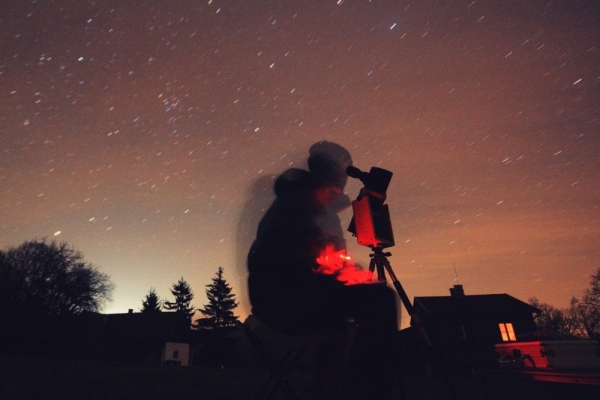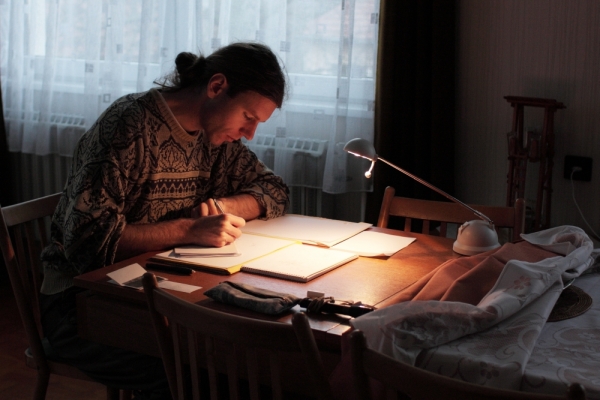deepeye.hu
Astronomical Drawings of Peter Kiss
Astronomical Drawings of Peter Kiss





The drawings were made by me. Every drawing starts with a sketch which I make at night under the sky by the telescope. I draw onto white paper with graphite (using a faint red lamp). In the vast majority of cases the sketches start with an empty circle (if no, I indicate it at the drawing). I sketch what I can see in the telescope field of view. The aim is to draw everything I see and nothing more.
Later at daytime I make the final drawing onto a separate sheet of paper based on the ready sketch. This is when the drawing becomes a true copy of the image I saw in the telescope: the stars will be round and the nebulous areas receive their correct tones. The ready drawing is made onto white paper with black graphite as well. There is usually only one copy of each drawing.
The drawings are "born negative", that is black graphite on white paper. Therefore this is natural to me. What is darker in the drawing is brighter in the telescope field. I digitally inverted some drawings into positive. You can find them under the given drawing.
When you take a look into the telescope almost everything is colorless. A small part of the brighter stars are colorful (yellow, blue, red), and the planets show pale colors. Among the deep-sky objects, the brighter planetary nebulae show colors, mainly shades between olive-green and turquise (due to the OIII emission). The color of planetary nebulae can sometimes be extremely vivid. The reason behind the general lack of colors is faintness - we see practically everything with the rods. There is simply too little light for the cones in our eyes.
I scan the ready drawing and retouch the artifacts of digitization (dust, scratches and the glint on the shiny graphite of the stars). The paper drawing basically looks the same as the digital version. Or even better (because of the better resolution).
True that the object (galaxy, nebula, etc.) is the most important, but I think that the stars are part of the field as well. Also, I like drawing under the sky and I think those couple of hours (sometimes years) of drawing the starfield are needed to get into the mood for the object. Furthermore maps usually differ from the very look of the field.

Even if the otherwise empty field contains only one star and a faint detailless spot, I spend at least and hour sketching it under the sky (maybe some detail shows up). Some sketches took dozens of hours to make through several years. Processing the sketch into the final drawing usually takes many hours as well. Processing the Eta Carinae sketch took about 70-80 hours in the course of 2 years.
No. 200 years ago in the time of William Herschel and Lord Rosse, visual observation and drawing were considered mainstream science. This changed with the birth of photography, a much more objective and measurable method.
No, in my opinion. I do not allow any artistic freedom for myself while drawing. I try to reproduce what I see in the eyepiece of the telescope as precisely as possible.
The fine details in these drawings are genarally very hard. To see them I needed to use all the tricks I learned throughout the decades. It took hours (sometimes nights or years) of looking into the eyepiece of the telescope with 100% concentration to create these drawings. There might be details which were visible only for 10 seconds in 2 hours. It is a great task to decide whether the given detail is actually there or it is only a trick of the eye / brain. There is a whole world between "I can see it" and "I cannot see it". It is very common that not all the details can be seen at the same time. For example when I see the faint spiral arm on the right I don't see the tiny inhomogenities of the bright core or the other spiral arm.